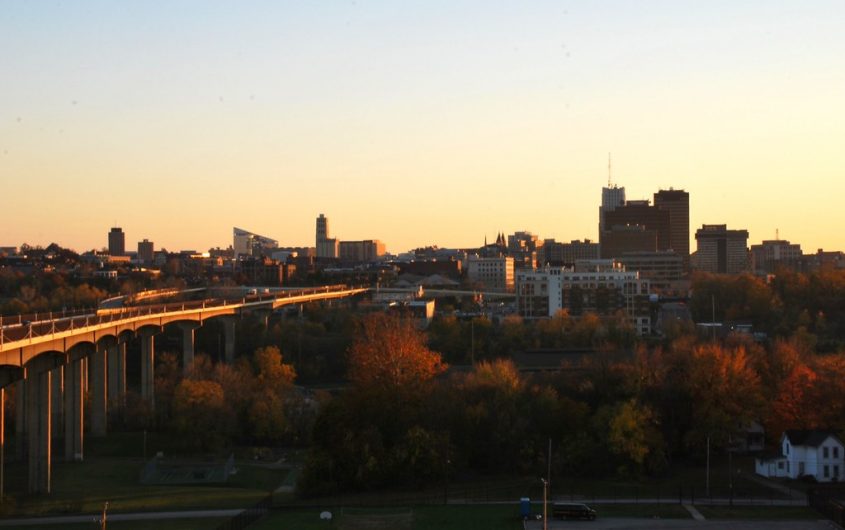
Jim Mc Glone via Flickr
Immigration and Questions of Identity in Akron, Ohio
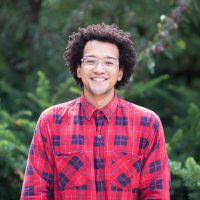
Dillon Cathro
University of Michigan School of Social Work
Dillon Alexander Methven Cathro provides diversity, equity and inclusion education and training to organizations in the DeKalb region and beyond. His primary goal is to foster connections with various organizations on the corporate and community levels in the region, and to work with them to foster work environments that center diversity, equity and inclusion in their strategic models. The only child of a single mother, and the product of a community-based approach to child-raising, Dillon has a passion for helping community members to seek out and access academic, professional and social resources on and off campus. Coming to NIU with professional experience in education, social work and community organizing, Dillon is clear and transparent in his mission to combat systemic injustices and looks forward to supporting community leaders throughout Dekalb County as they cultivate the skills and tools necessary to instill sustainable and equitable social change throughout their communities.
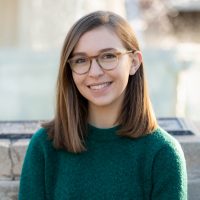
Fiona Harrigan
University of Arizona
Fiona Harrigan is an assistant editor at Reason, where she primarily covers immigration. Her writing has been featured in The Wall Street Journal, Newsweek, the Orange County Register, the Miami Herald, and many other outlets. She has been cited in The New York Times, The Wall Street Journal, The Hill, and Foreign Policy. She was previously a project fellow with the American Institute for Contemporary German Studies, a Marcellus Policy Fellow with the John Quincy Adams Society, and an Openness Fellow with Young Voices. At Young Voices, she was nominated for the 2021 Contributor of the Year Award.
Fiona attended the University of Arizona, graduating with a bachelor’s degree in political science. At Arizona, she was a member of Phi Beta Kappa and received an award from the Honors College for her photojournalism work on the U.S.-Mexico border. Originally from Pittsburgh, she currently lives in Washington, DC.
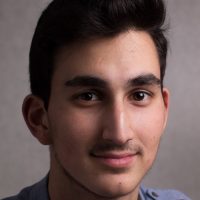
M. Talha Evran
University of Cologne & Altinbas University - Istanbul
M. Talha Evran is a third-year law student pursuing a double-degree from the University of Cologne-Germany and Altinbas University Istanbul-Turkey. He holds a scholarship from the German Academic National Foundation (Studienstiftung des deutschen Volkes). Mr. Evran launched “Campaign Refugee Child” in 2014 to draw attention to the unpleasant circumstances of refugee children in Germany. The same year, he was named a UNICEF Youth Ambassador of the Year by the German Committee for UNICEF. Moreover, he volunteers as a Junior Coach on behalf of the social initiative “180° Turn.” Mr. Evran’s international experiences include participating in a summer seminar in San Antonio, Texas, sponsored by the German-American Fulbright Commission.
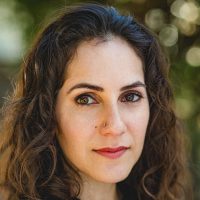
Sara Shokravi
Robert Bosch Fellow
Sara Shokravi lives in Berlin, Germany where she has spent the last year focusing on the experience of women in Germany’s refugee integration process as part of the Robert Bosch Foundation Fellowship. Through her work with the Expert Council of German Foundations on Integration and Migration and Kiron Open Higher Education for Refugees, she was able to examine integration approaches in Germany, ranging from labor and economic empowerment to the use of sport as a means of integration, through social networks of support and exchange of information. Prior to this, Ms. Shokravi spent over a decade working in both the private sector and non-profit organizations providing sociocultural and geopolitical expertise on leading foreign policy issues. Ms. Shokravi attended American University for her MA in International Politics and California State Polytechnic University for her BA in Political Science and History.
Overview of Issues
The United States, built on a history of immigration, is no stranger to questions of integration, identity, and social cohesion. It has long grappled with these questions, often taking generations for newcomers to fully integrate within the fabric of society as new arrivals confront the same challenges of identity and acceptance. Despite this long history, the United States seems to struggle increasingly with divided societies, fueled by political rhetoric, misinformation, and right-wing populism. These issues are not unique to the United States; with the increase in the number of refugees in 2015, Germany has also seen a rise in right-wing populism in its political system and the wider population. While the German federal state is a very young country compared to the United States, its population has far deeper roots to the land and its history than the general U.S. population, providing a more complex landscape to navigate for newcomers. Despite vastly different histories and approaches in addressing the needs of newcomers, Germany and the United States are faced with the same challenges in attaining social cohesion among increasingly diverse populations while meeting the needs of newcomers and long-existing populations who feel left out.
Perhaps the better term to use is social cohesion, where differences are not only accepted but celebrated and new traditions are adopted.
With this in mind, questions remain on what social cohesion truly looks like and how do divided societies get to “we.” What does integration look like and can it happen without the sense of fear and loss of identity? Perhaps the better term to use is social cohesion, where differences are not only accepted but celebrated and new traditions are adopted. As elusive as this may seem in divided societies, there needs to be facilitation from the grassroots as well as from the policy level. From the grassroots, opportunities for exposure and exchange between different communities need to take place. This allows for the exchange of shared stories and experiences that create opportunity for empathy and understanding. At the higher level, there should be laws and policies in place that create space for structural social change. Greater investment in disenfranchised groups, whether it is newcomers or long-existing impoverished communities, helps to eliminate gaps in distribution and recognition. More equitable opportunities in education, health, and housing help abolish feelings of being left behind and allow for better cohesion of communities. Visibility of minority groups in leadership positions also ensures progress toward social cohesion where it guarantees communities are represented and heard at varying levels in politics, academics, and business.
Akron, Ohio
In Akron, Ohio, the participants in AGI’s project on social divisions had the opportunity to meet with a number of local stakeholders, including government, civil society, and the media. Initial conversations painted a picture of camaraderie and tolerance between newcomers and longtime Akron residents. However, a deeper look into the subject presented a more nuanced reality.
Akron is home to the second largest population of Nepalis-Bhutanese in the U.S.; since 2008 over 5,000 refugees have been resettled in the city. Along with a large number of recently-arrived Congolese refugees, Akron has been able to curtail population loss while benefiting from the new ideas, energy, and economic power that come with newcomers. While newcomers have helped maintain Akron’s population and economy, they have also added to social tensions The Exchange House was founded to provide a safe space for minority communities to gather and celebrate their differences. However, limited resources also mean limited opportunities to truly engage and eliminate gaps in communities. While the Exchange House’s work has been inspiring and impactful in its short existence, they are still struggling to create opportunities for exchange between newcomers and the African American populations in the North Hill community.
According to the Exchange House, the local African American population had been unsure as to whether they were allowed to participate in the House’s activities. It has been their perception that they were exclusively for refugee or immigrant populations. Despite Exchange House’s clearly stated mission of being “public space celebrating cultures and cultivating community capacity” they have not been able to clearly convey this to the broader population. This confusion therefore led some African American community members to abstain from these intercultural exchanges, and in doing so, fomented an already instilled sense of otherness or estrangement between these groups.[1] Moreover, in an article written for the Akron Herald, the African American community expressed resentment toward the increasing presence of newcomers in their neighborhood due to their feelings that African American or Black roots or stories within the community were being forgotten.
This paints a picture filled with complexities facing Akron in the successes and challenges of integration and social cohesion of its refugee and migration communities and a local population that also feels disenfranchised. It demonstrates a resistance to change, perhaps even a fear of change. In the context of a city like Akron, where communities have been disenfranchised by regional de-industrialization, and displaced by development and gentrification efforts, it is understandable how long-term residents, of any ethnic background, may feel threatened by the increased presence of new social groups. Moreover, as the emphasis is often placed on economic value when it comes to newcomers to a city (i.e., revitalizing the workforce, economic assets), this may also add to a sense of alienation for communities that feel they are not receiving equal investment from the city.
Conversely, the social pushback against newcomers also has an effect on the sense of belonging and identity of these populations. It was understood, from conversations with Exchange House, that one of the factors contributing to some communities being so insular is the lack of wider community cohesion efforts, both by various social organizations and the city. Additionally, in observation and conversations with individuals throughout the week in Akron, it was noted that newcomer communities, similar to general trends in many countries, tend to stick together within their own socio-cultural/ethnic groups. This can be attributed to a desire to maintain language, faith, and cultural practices that are traditional to their respective people. The question remains, therefore, how one can bridge social divides between individuals, groups, and communities.
The question remains, therefore, how one can bridge social divides between individuals, groups, and communities.
It may take years, and often a generation, to truly see the successful integration/social cohesion of newcomers. In Akron, these successes are already beginning to develop. Aside from the grassroots efforts of the Exchange House, the foreign-born communities of Akron are also showing signs of success. They have contributed tremendously to Akron’s economy, with $137 million in annual spending power and contributing $17 million in state and local taxes each year. Without the increase of the refugee/migrant community, Akron’s population decline would be far greater and detrimental to the city. New arrivals have kept Akron’s working population young as the city’s aging Baby Boomers retire. Many of them are working in science, technology, engineering, and math (STEM) jobs or they are opening businesses and creating jobs.
The community is also starting to see itself in positions of leadership and influence. A noted individual is Officer Damber Subba. Deep-rooted fear of police and authority is well known among the Bhutanese community due to their twenty-year long experience in refugee camps. However, as the first Bhutanese police officer in Akron, Officer Subba is seen as a major bridge to the Bhutanese-Nepali community to help foster relationships with authorities.
At the policy level, the city of Akron has also taken steps to create a city and county that is welcoming for refugees and migrants. In conjunction with the Asian Services in Action, Global Ties Akron, and the International Institute of Akron, the city has been officially certified as a Welcoming City. The government, local businesses, and nonprofits have been working together to create inclusive policies and practices that welcome refugees and immigrants and to help them prosper. This network of public and private partners is to help empower and facilitate the integration process in Akron in an equitable and respectful manner that is mindful of the diversity of refugee and migrant communities.
The city of Akron, Ohio, has many struggles to overcome in truly achieving social cohesion among its diverse population, including newcomers and its long-residing population who often feel left out. To truly change a population’s way of thinking and to alleviate fears and mistrust may take years to come. However, the city is taking steps in the right direction in addressing these deep-rooted problems. Where city officials and policy fall short, grassroots initiatives are also making headway, despite limited resources and shortcomings. With the Welcoming City project only in its second year and the existence of initiatives like the Exchange House only three years old, the city has great potential to head in the right direction in creating a prosperous and cohesive community. It is a question of dedication, intention, and time that will reveal the true success.
[1] Katie Beck, as discussed in meeting between AGI participants and Exchange House staff, November 6, 2019.
Support for this article was generously provided by The German Marshall Fund of the United States.







